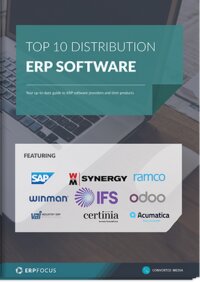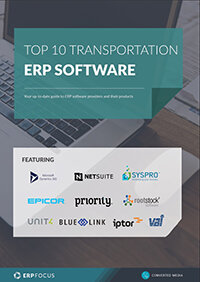Are Product Labels the Banana Skins of Distribution ERP?
One distribution ERP function which is easy to take for granted, difficult to fix, and is unfortunately, one the customer touch points which will determine the feedback you get from the sales force on the success of the ERP implementation, is product labels. By labels, we mean the paper things that are attached to a shipped package, including the packing list, product labels, and any special purpose labels, such as customer labels, or hazard information.
The reason this area is so susceptible to headaches is due to the variety of problems that can trip you up. First are all the printer issues, and printer destination issues. People who are not responsible for shop floor or distribution support often fail to realize that printers are not created equal, and that most printers will require either a new internal card to operate with new ERP distribution software, or outright replacement. The software used to create documents such as labels is a strategic choice, determined by needs, ease of future support, and how well it plays with core ERP. What goes on labels is often a matter of tribal knowledge, so a few key people missing from blueprinting can create enormous gaps in requirements that take weeks to repair after go live. The source of data for labels is also a strategic choice, since the implications of ERP and supply chain master data decisions often take time to sink in, while legacy labels often are sourced from a specific label database.
Designing the forms themselves is a tedious, iterative process. In most cases, field usage has evolved, field names have changed, and character length within data fields have changed such that labels must be reformatted. This leads to the possibility of omission, or assigning incorrect data to fields. The worse case is when different types of data have been assigned to the same label field, depending on the end use (say, one business populates “special instructions” with lab results, and another populates it with project name).
Real World Testing
The final obstacle is that testing labels within a new distribution ERP system is an error-prone process and accountability is unclear. Most people will look at a label, and if it has some verbiage in it, and it could be right, will assume that it is. And because no physical product is actually leaving distribution, label creation is often not tested as part of an integrated volume test; again, it is assumed that if you can print one, you can print a thousand.
To avoid label problems at ERP go live, try to have customer service engage the appropriate people at your top five customers in each strategic business unit. Send some test labels and see if they mention any gaps or errors. Test labels extensively and make certain there is business accountability in evaluating the results.
It is highly unfortunate that success in supply chain, purchasing, finance, order entry, and inventory can all be overshadowed because the only feedback top management is getting is customer complaints about incorrect labeling.
Free white paper

How To Create An Effective Supply Chain with ERP Solutions

Featured white papers
-

Top 10 Distribution Software Comparison
Compare the best distribution ERP systems available today
Download -

Top 10 Transportation ERP Software Comparison
Get your free comparison of the top 10 transportation ERPs
Download -

7 steps to selecting distribution ERP
Get expert advice on distribution ERP selection and requirements analysis
Download
Related articles
-

ERP for Food Distributors: Key Functionality
In a modern world where products are tailored to consumers, why should ERP for food distributors ...
-

CMMC Compliance: What Aerospace and Defense Manufacturers Need to Know
Key insights on CMMC compliance, deadlines, and securing DoD contracts with CMMC 2.0 certificatio...
-

ERP & Logistics: Optimizing the Supply Chain
Read about the steps you can take to optimize your supply chain through ERP software logistics ma...

